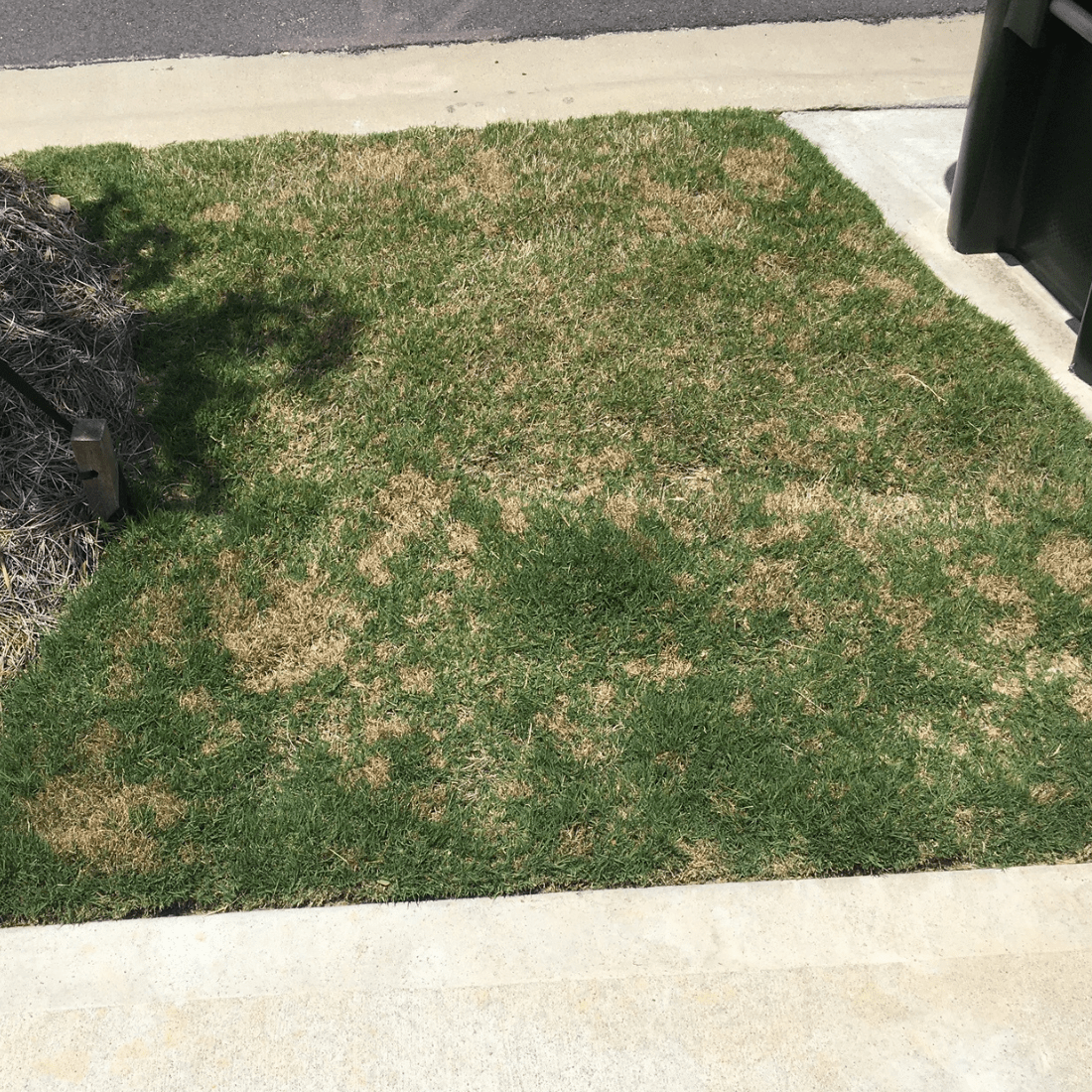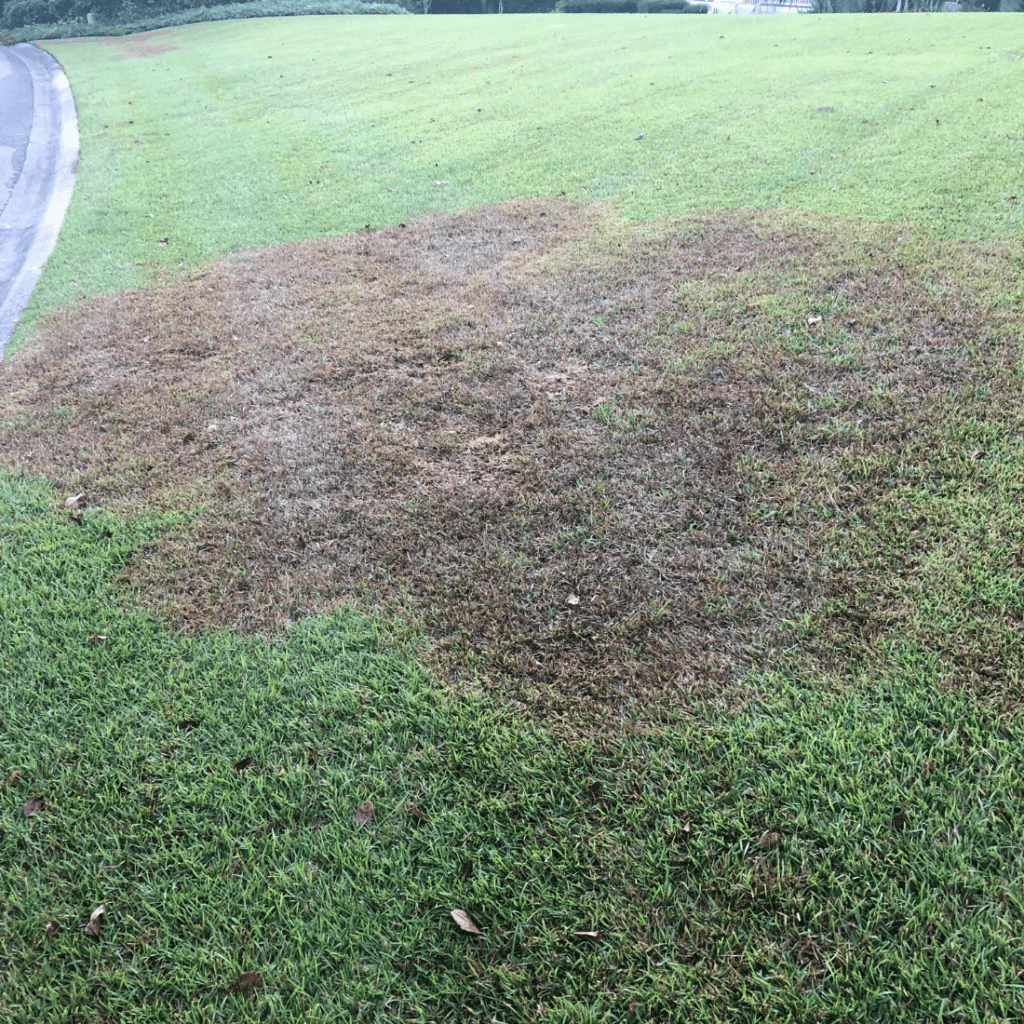
Fungus is a turf disease caused by living, microscopic organisms. Pathogenic fungi are the most common. With Clark’s lawn fungus control, harmful disease issues will be identified and eradicated by our Turf Pros; allowing you to enjoy your beautiful lawn.
“WHAT DOES FUNGUS LOOK LIKE?”

HOW DID MY LAWN GET IT?
Fungus in turfgrass can be carried by the wind, on people’s feet, and mowing equipment. It could have also remained dormant on the turf or soil until conditions favored an outbreak.
Other contributing factors include:
- Overwatering
- Improper mowing
- Watering in the evening
- Fungus being transported from other areas
- Signs that your lawn may have a fungal disease include:
- Brown spot of dead grass in lawn
- White, yellow, or brown spots or rings that grow in diameter
- Thin spots of frayed, distorted, or discolored grass blades
- Gray, black, red, orange, or purple spots on blades or stems
- Gray, black, or pink powdery or threadlike coatings on and around grass blades
- Areas of darkened, wet-looking, slimy, or greasy-looking grass
HOW CLARK’S GETS RID OF LAWN FUNGUS
We offer three preventative fungicide applications to control fungus when the grass is most vulnerable.
This includes:
- Two fungicide applications in the Fall (late September and October) to control fungus before the grass goes dormant
- One application in late February to Mid-March in preparation for Spring
If fungus occurs during the growing season and at least two preventative applications have been completed, Clark’s will treat fungus outbreaks during the growing season at no charge if the fungus is not the result of improper watering, groundwater, or improperly maintained turf.
DID YOU KNOW?
Fungi can’t make their food, so they make holes in the plant’s skin (epidermis) or enter through the plants breathing holes (stomata).
- Fungi kill the plant cells before stealing their food or stealing the nutrients from the living cells in the plant.
- Some fungi that live in the soil enter the roots of the turf and either block the water-conducting cells or kill them.
- Each turf has specific vulnerabilities and immunity to certain fungi.
GET A FAST FREE ESTIMATE

